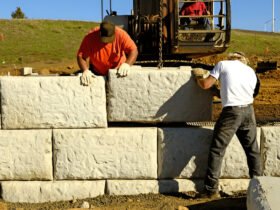As winter approaches, many homeowners start preparing for the colder months by stocking up on firewood to keep their homes warm and cozy. One essential tool for processing wood is a log splitter. However, with the numerous options available in the market, choosing the right one can be confusing. This article aims to provide a comprehensive guide on electric log splitters, their benefits, and factors to consider while purchasing one. So, let’s dive into the world of electric log splitters and find the perfect solution for your wood processing needs.
1. What is an Electric Log Splitter?
An electric log splitter is a wood processing tool that uses electricity to split logs into smaller pieces, making it easier to handle and transport. It operates by exerting a splitting force on the log, forcing it apart along the grain. Electric log splitters are available in various sizes and capacities, catering to both residential and commercial users.
2. Benefits of Electric Log Splitters
Environmentally friendly
One of the most significant advantages of using electric log splitters is their eco-friendly nature. Unlike gas-powered log splitters, electric models do not emit harmful fumes or greenhouse gases. They also consume less energy, making them a more sustainable option for splitting logs.
Low noise levels
Electric log splitters are known for their quiet operation, making them an excellent choice for residential areas or places with noise restrictions. They allow users to work comfortably without disturbing neighbors or wildlife.
Low maintenance
Electric log splitters require minimal maintenance compared to gas-powered models. There is no need for oil changes, spark plug replacements, or air filter cleanings. All you need to do is occasionally check the hydraulic fluid levels and keep the machine clean.
Ease of use
Electric log splitters are easy to operate, with most models featuring a simple push-button start. They are also lightweight and can be easily moved around the work area.
3. Types of Log Splitters
Manual Log Splitter
A manual log splitter is the most basic type of log splitter. It requires physical effort to operate, making it suitable for small-scale users with occasional log splitting needs. Manual log splitters are affordable, portable, and do not require electricity or fuel to function.
Electric Log Splitter
As discussed earlier, electric log splitters are an environmentally friendly, low-noise, and low-maintenance option for splitting logs. They are suitable for medium-scale users with regular log splitting needs and access to an electrical outlet.

Gas Log Splitter
Gas log splitters are powerful tools designed for heavy-duty log splitting tasks. They use gasoline as fuel and are suitable for large-scale users with extensive log splitting needs. However, they emit fumes, are noisy, and require regular maintenance.
Hydraulic Log Splitter
Hydraulic log splitters are versatile tools that can be powered by electricity, gas, or manual effort. They use hydraulic pressure to exert a splitting force on the log. Hydraulic log splitters are available in various capacities, making them suitable for all types of users.
4. Factors to Consider When Purchasing an Electric Log Splitter
Splitting force
The splitting force is a crucial factor to consider while purchasing an electric log splitter. It determines the machine’s ability to split logs of different sizes and wood types. Electric log splitters typically have a splitting force ranging between 4 and 20 tons. Choose a model with sufficient splitting force to handle the logs you typically process.
Log size and type
Consider the size and type of logs you usually process while purchasing an electric log splitter. Some models can handle larger logs, while others are designed for smaller ones. Hardwoods like oak and maple require more force to split compared to softwoods like pine and cedar.
Portability
If you need to move your log splitter around your property or transport it to different locations, choose a model with portability features like wheels and a lightweight design.
Budget
Electric log splitters are available at different price points. Determine your budget and select a model that offers the best value for your money without compromising on quality and performance.
5. Safety Tips for Using Electric Log Splitters
- Read the user manual thoroughly before operating the machine.
- Wear appropriate safety gear like gloves, safety goggles, and sturdy boots.
- Keep children and pets away from the work area.
- Do not operate the log splitter on wet or slippery surfaces.
- Avoid overloading the machine or forcing it to split logs beyond its capacity.
Conclusion
Electric log splitters are an excellent choice for efficient and eco-friendly wood processing. They offer numerous benefits like low noise levels, ease of use, and low maintenance, making them suitable for a wide range of users. Consider factors like splitting force, log size and type, portability, and budget while purchasing an electric log splitter to ensure you select the ideal model for your needs. By following the guidelines and safety tips provided in this article, you can enjoy a hassle-free and productive log splitting experience.









Find Us on Socials